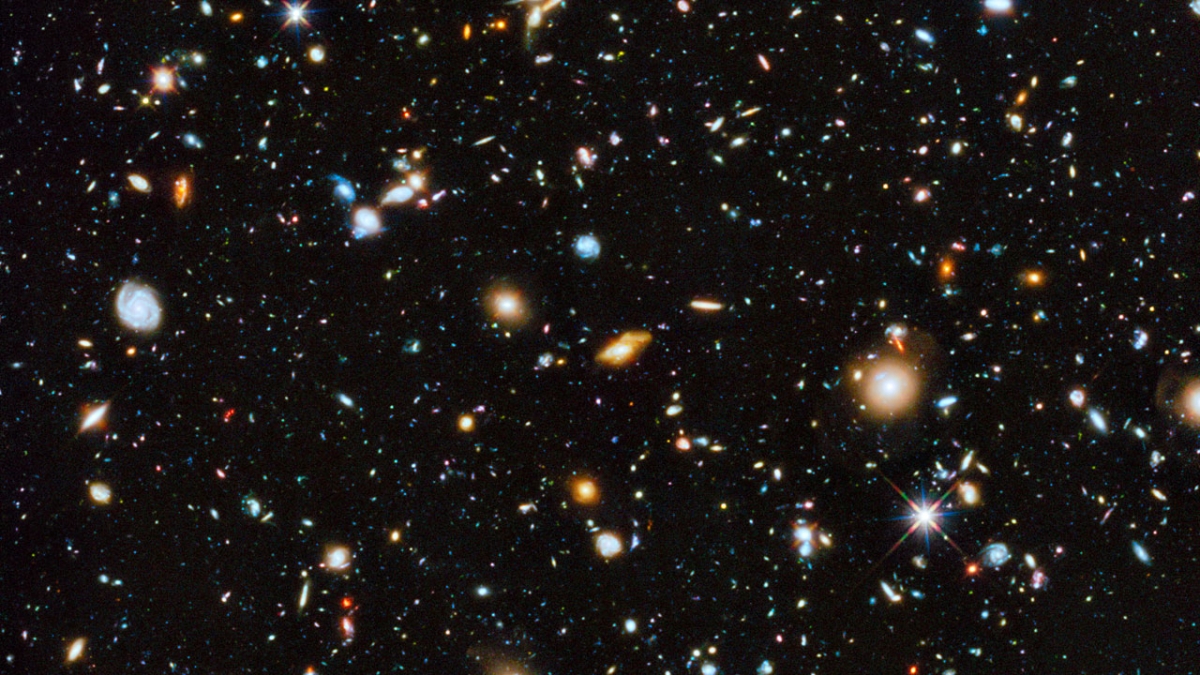Hubble unveils its most colorful view of the universe

Astronomers using the Hubble Space Telescope have assembled a very comprehensive picture of the evolving universe – and the most colorful. This study, called the Ultraviolet Coverage of the Hubble Ultra Deep Field (UVUDF) project, provides the missing link in star formation, say researchers.
Prior to this survey, astronomers were in a curious position. They had knowledge of star formation in nearby galaxies from missions such as NASA's GALEX observatory. And, thanks to Hubble's near-infrared capability, they also studied star birth in the most distant galaxies, which appear to us in their most primitive stages, thanks to the vast light travel time involved. But for the period in between – a range extending from about 5 billion to 10 billion light-years away – they just didn't have enough data. This is the time when most of the stars in the universe were born.
Ultraviolet light comes from the hottest, most massive and youngest stars. By observing at these wavelengths, researchers get a direct look at which galaxies are forming stars and, just as importantly, where within those galaxies the stars are forming.
Astronomers have previously studied the Hubble Ultra Deep Field in visible and near-infrared light in a series of exposures taken from 2004-2009. Now, with the addition of ultraviolet light, they have combined the full range of colors available to Hubble, stretching all the way from ultraviolet to near-infrared light. The resulting image – made from 841 orbits of telescope viewing time – contains approximately 10,000 galaxies, extending back in time to within a few hundred million years of the big bang.
Studying the ultraviolet images of galaxies in this intermediate time period enables astronomers to understand how galaxies like our Milky Way grew in size from small collections of very hot stars. Because Earth's atmosphere filters most ultraviolet light, this work can only be accomplished with a space-based telescope.
The Hubble Ultra Deep Field 2014 image is a composite of separate exposures taken from 2009-2012 with Hubble’s Advanced Camera for Surveys and Wide Field Camera 3.
“It's the deepest panchromatic image of the sky ever made. It reaches the faintness of one firefly as seen from the distance of the moon,” says Rogier Windhorst, professor at the School of Earth and Space Exploration in Arizona State University’s College of Liberal Arts and Sciences.
"Ultraviolet surveys like this one, using the unique capability of Hubble, are incredibly important in planning for the James Webb Space Telescope," explained Windhorst, a team member. "Hubble provides an invaluable ultraviolet light dataset that researchers will need to combine with infrared data from Webb. This is the first really deep ultraviolet image to show the power of that combination."
When better reductions of these ultraviolet images became available earlier this year, Windhorst made properly weighted stacks of the 13-filter images and put them together in a final color mosaic. This was then perfected by Zolt Levay at the Space Telescope Science Institute.
ASU students will use images like these to analyze in detail the cosmic star-formation during the last 10 billion years. Such studies have become possible thanks to the unique ultraviolet imaging capability of Hubble's Wide Field Camera 3 (WFC3), the last camera installed into Hubble in May 2009. ASU has had major scientific involvement in WFC3 since the designing and building of it started in 1998.
For Hubble Ultra Deep Field 2014 images and more information about Hubble, visit: http://hubblesite.org/news/2014/27 and http://www.nasa.gov/hubble.